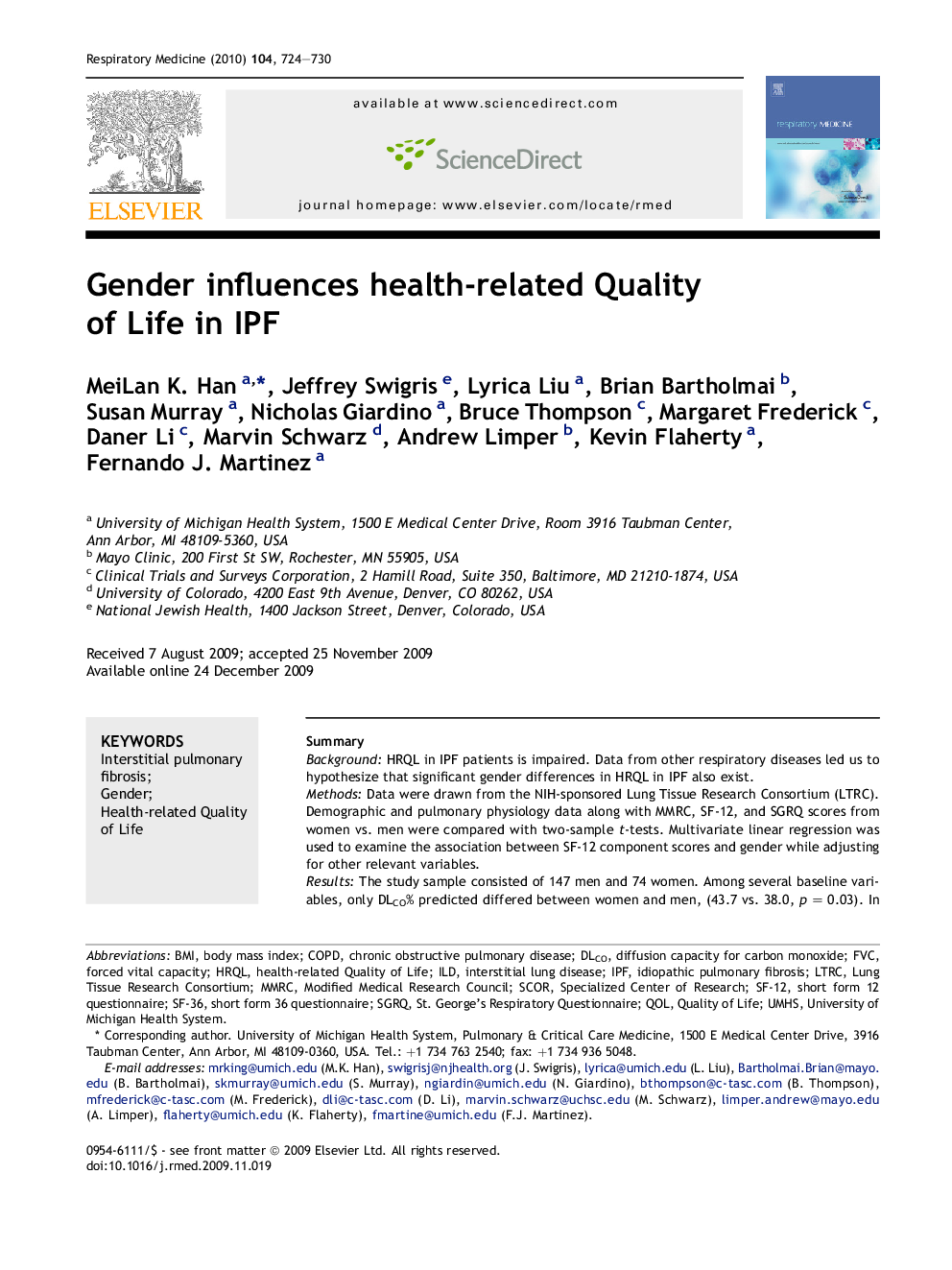| Article ID | Journal | Published Year | Pages | File Type |
|---|---|---|---|---|
| 4211113 | Respiratory Medicine | 2010 | 7 Pages |
SummaryBackgroundHRQL in IPF patients is impaired. Data from other respiratory diseases led us to hypothesize that significant gender differences in HRQL in IPF also exist.MethodsData were drawn from the NIH-sponsored Lung Tissue Research Consortium (LTRC). Demographic and pulmonary physiology data along with MMRC, SF-12, and SGRQ scores from women vs. men were compared with two-sample t-tests. Multivariate linear regression was used to examine the association between SF-12 component scores and gender while adjusting for other relevant variables.ResultsThe study sample consisted of 147 men and 74 women. Among several baseline variables, only DLCO% predicted differed between women and men, (43.7 vs. 38.0, p = 0.03). In general, men exhibited lower (better) MMRC scores (1.7 vs. 2.4, p = 0.02), particularly those with milder disease as measured by DLCO% predicted. In an adjusted analysis, SF-12 PCS scores in men were lower (worse) than women (p = 0.01), an effect that was more pronounced in men with greater dyspnea scores. In a similar analysis, SF-12 MCS scores in women were lower than men (worse) (48.3 vs. 54.4, p = 0.0004), an effect that was more pronounced in women with greater dyspnea scores.ConclusionsSignificant gender differences in HRQL exist in IPF. As compared to women, men reported less severe dyspnea, had worse SF-12 PCS scores, but better SF-12 MCS scores. Dyspnea appears to have a greater impact on the physical HRQL of men and the emotional HRQL of women. An improved understanding of the mechanism behind these differences is needed to better target interventions.
